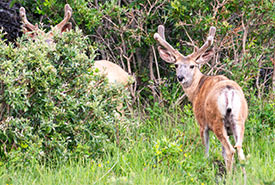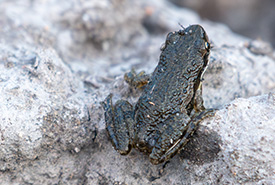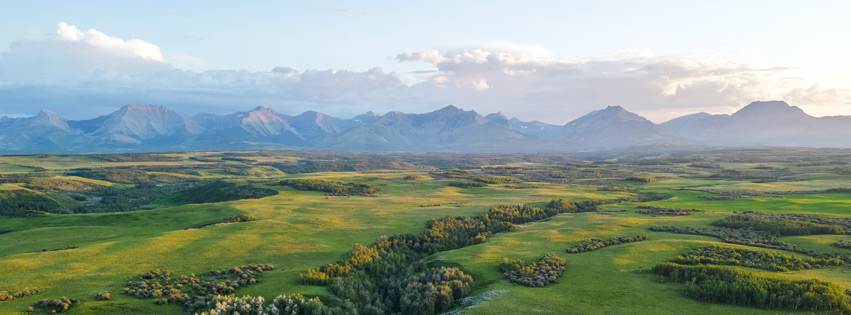Summer at The Yarrow

Mule Deer bucks on The Yarrow (Photo by Sean Feagan / NCC Staff)
As the summer sun shines down upon The Yarrow, a spellbinding Nature Conservancy of Canada (NCC) property in southwestern Alberta, the landscape here seems quieter compared to the vibrant sights and sounds of spring. However, a closer look reveals that life still thrives through the hot and dry summer months in this remarkable place.
In just a couple of hours spent exploring The Yarrow on a summer evening, you can witness an array of captivating natural wonders. From blooming wildflowers to bustling wetlands and even a glimpse into the lives of coyotes and boreal chorus frogs, the diverse ecosystem of The Yarrow offers a glimpse into the beauty of nature's resilience.
Summer wildflowers
Though the spring blossoms may have faded, the grasslands of The Yarrow remain adorned with a stunning display of late-season wildflowers. Among them, wild bergamot, or bee balm, steals the show with its clusters of showy purple flowers. These vibrant blooms serve as a favourite food source for pollinators, including hummingbirds.

Géranium visqueux (Photo de Sean Feagan/CNC)
Also, the sticky purple geranium, with its captivating pink flowers and amazing ability of trapping and digesting small insects for nutrients, adds intrigue to the flora of The Yarrow.
Busy wetland
As dusk descends upon The Yarrow, the wetlands come alive with activity. A mother duck leads her ducklings through the water while a black tern hovers as it hunts for insect prey nearby. At the same time, a muskrat and beaver can be seen diligently foraging among the cattails. This lively wetland ecosystem offers a glimpse into the interconnectedness of different species and their reliance on these vital habitats.
Young pups
Adjacent to one of the wetlands lies a den that shelters a small family of coyotes. Coyotes choose den locations with suitable soils for digging; these are often found on hillsides, embankments or areas of dense vegetation. Though the parents remain unseen, their presence is evidenced by the playful activities of their four pups. These curious youngsters explore and frolic along the side of the wetland, providing a heartwarming glimpse into the family dynamics of these hardy predators.
Get hoppin'
In another wetland on the property, a captivating spectacle awaits: the presence of hundreds, if not thousands, of months-old boreal chorus frogs.

Boreal chorus frog at The Yarrow (Photo by Sean Feagan / NCC Staff)
Alberta's smallest and most widespread amphibian species, these frogs lay their eggs in temporary bodies of water, such as ponds, swamps and water-filled ditches. Having completed their transformation from tadpoles to juvenile frogs, they leave the water and venture onto land. Witnessing their life cycle reminds us of the intricate wonders of nature and the adaptability of these tiny amphibians.
A home for life
As summer blankets The Yarrow, life pulses through its grasslands, wetlands and denning grounds. From the colourful tapestry of wildflowers to the bustling activities of wetland creatures, every corner of this place offers a captivating glimpse into the interconnectedness of nature.
Thanks to the support of NCC’s conservation efforts by groups such as Cenovus Energy, this sanctuary remains a home for life and a place where the wonders of the natural world unfold in every season. Their efforts have made a significant impact in conserving this incredible place, ensuring that it remains a home for life, forever.




